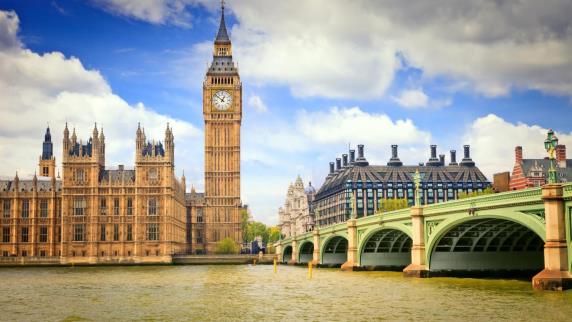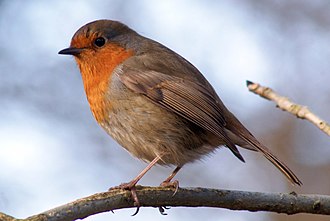
Content:
Geograpchical facts……………………………2
Story……………………………………………..4
Fauna…………………………………………….6
Flora………………………………………………8
Interesting facts about Great Britain……….10
CREATED BY:
IRYNA PAS
8 CLASS

GEOGRAPHICAL FACTS
Great Britain is an island in the North Atlantic Ocean off the northwest coast of continental Europe. With an area of 209,331 km2, it is the largest of the British Isles, the largest European island, and the ninth-largest island in the world. The island is dominated by a maritime climate with narrow temperature differences between seasons. The 60% smaller island of Ireland is to the west – and together these islands, along with over 1,000 smaller surrounding islands and named substantial rocks, form the British Isles archipelago. Connected to mainland Europe by a landbridge called Doggerland until 9,000 years ago, Great Britain has been inhabited by modern humans for around 30,000 years.
In 2011, the island had a population of about 61 million people, making it the world’s third-most-populous island after Java in Indonesia and Honshu in Japan.
The term “Great Britain” is often used to refer to England, Scotland and Wales, including their component adjoining islands. Great Britain and Northern Ireland now constitute the United Kingdom. The single Kingdom of Great Britain resulted from the 1707 Acts of Union between the kingdoms of England (which at the time incorporated Wales) and Scotland.

STORY
Great Britain was probably first inhabited by those who crossed on the land bridge from the European mainland. Human footprints have been found from over 800,000 years ago in Norfolk and traces of early humans have been found from some 500,000 years ago and modern humans from about 30,000 years ago. Until about 16,000 years ago, it was connected to Ireland by only an ice bridge, prior to 9,000 years ago it retained a land connection to the continent, with an area of mostly low marshland joining it to what are now Denmark and the Netherlands. In Cheddar Gorge, near Bristol, the remains of animal species native to mainland Europe such as antelopes, brown bears, and wild horses have been found alongside a human skeleton, ‘Cheddar Man‘, dated to about 7150 BC.
Great Britain became an island at the end of the last glacial period when sea levels rose due to the combination of melting glaciers and the subsequent isostatic rebound of the crust. Great Britain’s Iron Age inhabitants are known as Britons; they spoke Celtic languages.

FAUNA
Animal diversity is modest, as a result of factors including the island’s small land area, the relatively recent age of the habitats developed since the last glacial period and the island’s physical separation from continental Europe, and the effects of seasonal variability. Great Britain also experienced early industrialisation and is subject to continuing urbanisation, which have contributed towards the overall loss of species. A DEFRA (Department for Environment, Food and Rural Affairs) study from 2006 suggested that 100 species have become extinct in the UK during the 20th century, about 100 times the background extinction rate. However, some species, such as the brown rat, red fox, and introduced grey squirrel, are well adapted to urban areas.
Rodents make up 40% of the mammal species. These include squirrels, mice, voles, rats and the recently reintroduced European beaver. There is also an abundance of European rabbit, European hare, shrews, European mole and several species of bat. Carnivorous mammals include the red fox, Eurasian badger, Eurasian otter, weasel, stoat and elusive Scottish wildcat. Various species of seal, whale and dolphin are found on or around British shores and coastlines. The largest land-based wild animals today are deer. The red deer is the largest species, with roe deer and fallow deer also prominent; the latter was introduced by the Normans. Sika deer and two more species of smaller deer, muntjac and Chinese water deer, have been introduced, muntjac becoming widespread in England and parts of Wales while Chinese water deer are restricted mainly to East Anglia.
Habitat loss has affected many species. Extinct large mammals include the brown bear, grey wolf and wild boar; the latter has had a limited reintroduction in recent times. There is a wealth of birdlife, with 619 species recorded, of which 258 breed on the island or remain during winter. Because of its mild winters for its latitude, Great Britain hosts important numbers of many wintering species, particularly waders, ducks, geese and swans. Other well known bird species include the golden eagle, grey heron, common kingfisher, common wood pigeon, house sparrow, European robin, grey partridge, and various species of crow, finch, gull, auk, grouse, owl and falcon. There are six species of reptile on the island; three snakes and three lizards including the legless slowworm.
One snake, the adder, is venomous but rarely deadly. Amphibians present are frogs, toads and newts. There are also several introduced species of reptile and amphibian.

FLORA
The flora comprises 3,354 vascular plant species, of which 2,297 are native and 1,057 have been introduced. The island has a wide variety of trees, including native species of birch, beech, ash, hawthorn, elm, oak, yew, pine, cherry and apple. Other trees have been naturalised, introduced especially from other parts of Europe (particularly Norway) and North America. Introduced trees include several varieties of pine, chestnut, maple, spruce, sycamore and fir, as well as cherry plum and pear trees. The tallest species are the Douglas firs; two specimens have been recorded measuring 65 metres or 212 feet. The Fortingall Yew in Perthshire is the oldest tree in Europe.
There are at least 1,500 different species of wildflower.
Some 107 species are particularly rare or vulnerable and are protected by the Wildlife and Countryside Act 1981. It is illegal to uproot any wildflowers without the landowner’s permission. A vote in 2002 nominated various wildflowers to represent specific counties. These include red poppies, bluebells, daisies, daffodils, rosemary, gorse, iris, ivy, mint, orchids, brambles, thistles, buttercups, primrose, thyme, tulips, violets, cowslip, heather and many more. There are also many species of algae and mosses across the island.
Interesting facts about the Great Britain
1-Tea is by far the most famous drink among Brits. It is estimated that they drink 165 million cups of tea every day. The fun thing here is that in the U.S. the tea’s consumption is 20 times lower.
2-London houses more than 8 million citizens who communicate via different languages. It is estimated that more than 300 languages are spoken in the city.
3-The first postage stamp was created in the U.K. It was designed in May 1840, and it featured Queen Victoria.
4-The monument of Stonehenge is claimed to be one of the oldest monuments in the world, scientists believe that it was built over in 3,000 B.C.

5-Standing at 1,107 feet or 350 meters, London’s Shard is the tallest object in the European continent.
6-Golf was invented in Scotland and is considered a national sport today. Sources claim that golf was created in 1457. It got so prevalent that James II banned it because it interrupted with army’s practice.
7-The typical food in the U.K. is roast beef and Yorkshire beef, but the Brits have voted Chicken Tikka as their national dish. The Chicken Tikka is actually an Indian recipe.
8-European continental land is linked with The U.K. through the Channel Tunnel. It connects the city of Calais (France) and Dover (England). At 21 miles this road is the second-longest underground tunnel.
9-Queen Elizabeth is the longest-reigning Queen in the world.
10-The British royal family still resides at The Windsor Castle making it the oldest royal residence.
11-In August 1896, the United Kingdom and the Zanzibar Sultanate fought for around 40 min; making it the shortest war ever happening in history. Only 1 British sailor was injured while casualties at the other end reached 500.
12-English is the official language of the U.K., yet there are a variety of accents throughout the country. The emphasis changes so often that within a few km, you may come across a different accent.

THANKS FOR READING📚
💖🧡💛💚💙💜
Published: May 13, 2022
Latest Revision: May 13, 2022
Ourboox Unique Identifier: OB-1331027
Copyright © 2022








